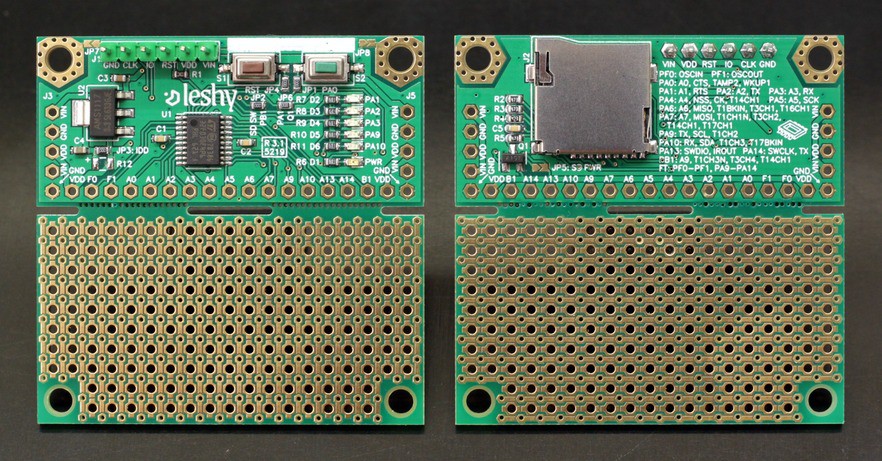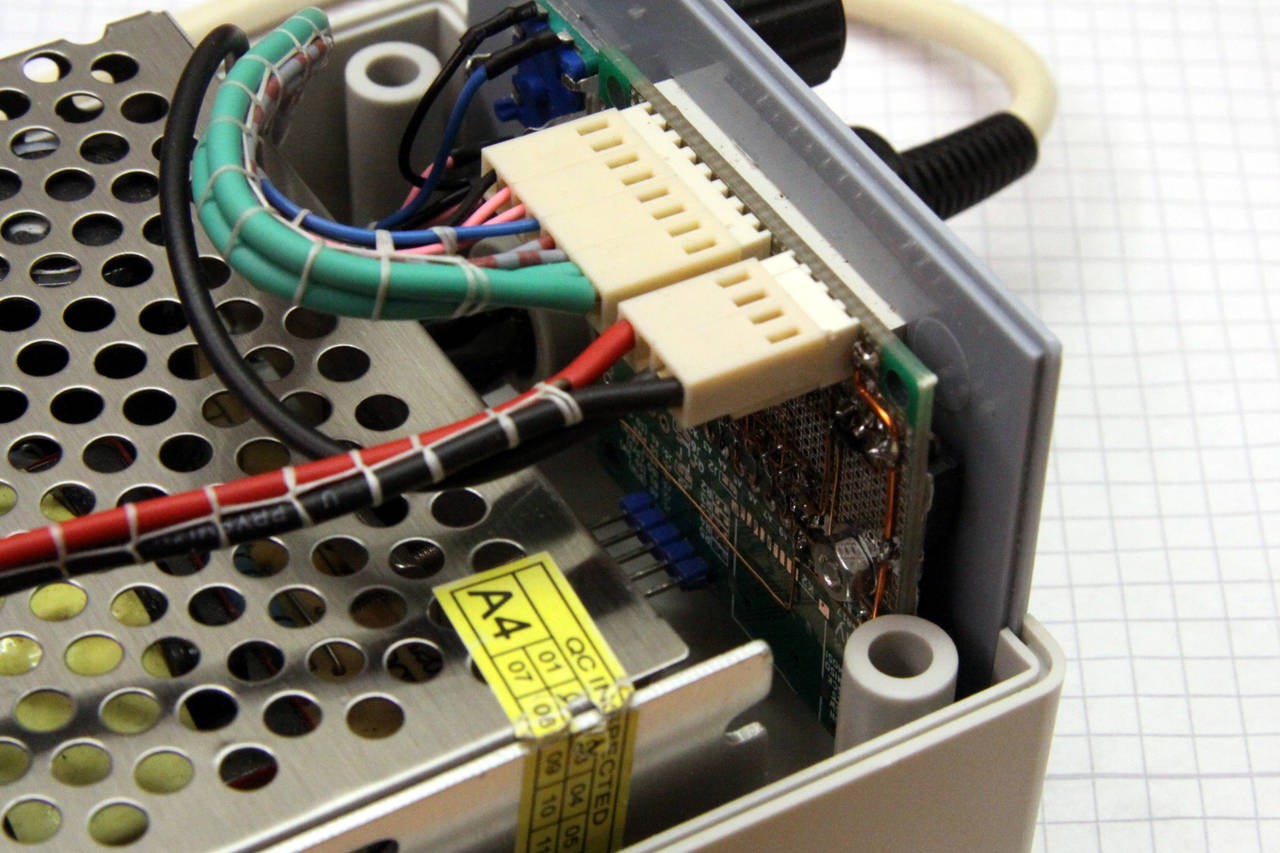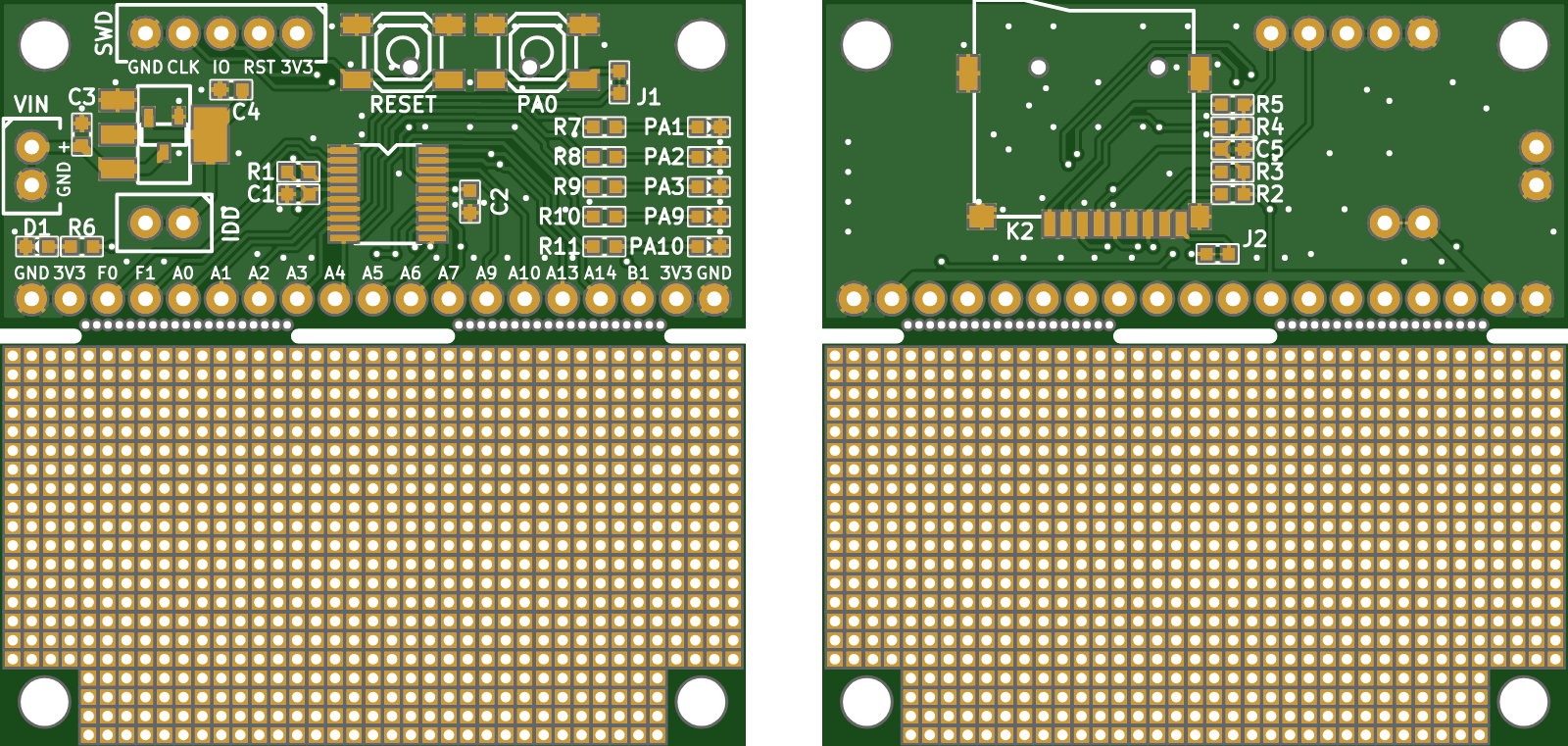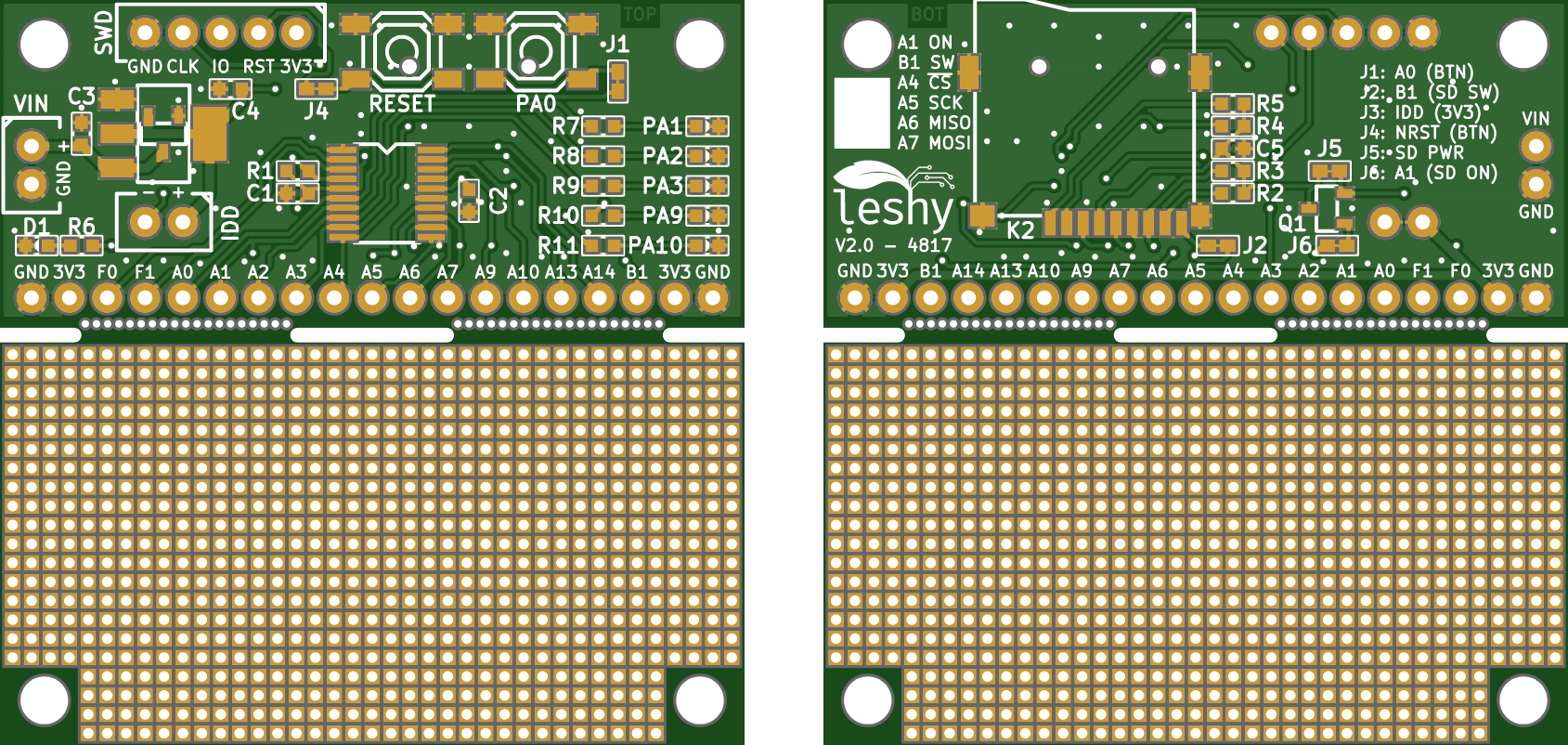-
New revision: a complete overhaul
02/04/2020 at 16:49 • 0 commentsAbout two years after revision 2, I decided to do a complete redesign of the board. The general form factor stayed the same, but many of the original design's issues could be addressed. Most importantly, revision 3.0 features an optimised prototyping area. Here's what it looks like:
![]()
Schematics, layout and code examples can be found on GitHub.
There also is a blog post with details about the whole development process, including a list of all the changes.
-
New demo project: Soldering iron controller
05/21/2018 at 19:30 • 0 comments![]()
So far this has only been a page for a prototyping board with nothing about actual prototypes. This isn't necessarily a bad thing, but there's no harm in some inspiration for possible uses for the board.That's why I decided to add a small weekend project here: A simple controller for a Hakko-907-style soldering iron (because Chinese fakes of these and the appropriate tips are widely and cheaply available).
For this application, the STM32F030F4P6 has the perfect size with just the right number of pins and absolutely sufficient capabilities. The leshy has just enough prototyping area for the display and the few extra components the controller needs. To be fair, the encoder and jack for the soldering iron wouldn't fit on the PCB, but those look well in their panel-mount configuration here.
Being built over the last weekend, it of course isn't perfect, but I think it has some reusable components for accelerating development. Well, apart as being useful as a soldering iron for me. Code, schematic and documentation are on GitHub.
-
The second board revision is finished!
11/27/2017 at 18:51 • 0 commentsAs my boards start to run out, I had to order new ones. On this occasion, I made some changes to the boards, mainly:
- The SD card can now be switched off via a small MOSFET. An SD card can draw a lot of power for battery-powered applications, so having the option to turn it off is nice. The MOSFET is connected to PA1 and is shorted via J5 per default, so the MOSFET isn't required.
- There's way more silkscreen text. The backside had free room which I used for some helpful labeling.
- Minor improvements of the layout, of course.
The overall look hasn't changed much from
![]()
to
![]()
leshy – Less Expensive STM32F0-Hosting Prototypes
A cheap, small prototyping board for a cheap, small STM32F0 controller
 fruchti
fruchti


